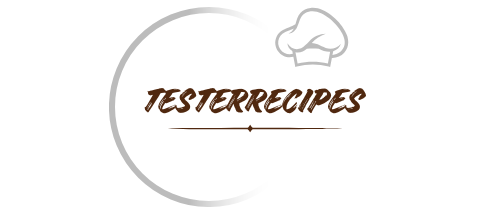H1: The Ultimate Guide: What Is the Formula for Banana Bread?
Introduction
Everyone seems to have their own twist on banana bread, don’t they? From the nostalgic aroma wafting through Grandma’s kitchen to the health-focused modern spins using alternative flours, there’s no shortage of ways to enjoy this sweet loaf. In this article, we’ll dive deep into What is the formula for banana bread? and explore how you can harness classic baking science while experimenting with flavor bursts—like nuts, chocolate chips, or even spices like cinnamon and nutmeg. We’ll also cover a variety of techniques to get that perfectly moist crumb, examine troubleshooting tips, and highlight creative serving ideas. By the end, you’ll not only be confident in crafting a classic banana loaf but also inspired to whip up new variations that showcase your personality. Let’s kick things off with the foundations—understanding the basics of our beloved banana bread formula.
What Is the Formula for Banana Bread? Understanding the Basics
The Science Behind a Perfect Banana Bread
When people talk about what is the formula for banana bread, they’re usually referring to that magical balance of dry and wet ingredients that yields a soft, moist crumb. It’s essentially a traditional quick bread—no yeast needed—where baking soda or baking powder take center stage as the leavening agents. Because overripe bananas boast a higher sugar content and release flavorful moisture, they lend a delectable sweetness and tenderness to the loaf.
But there’s more to the science than bananas. Getting the muffin method right is crucial. This method involves mixing dry and wet ingredients in separate bowls, then gently combining them so gluten development is controlled. Excessive stirring can result in a dense, tough loaf, so it’s important to be gentle. Aim for a batter that’s lumpy but consistent, ensuring proper distribution of mashed bananas, flour, and other components.
Key Components in a Classic Banana Bread Formula
A basic banana bread recipe typically calls for flour, ripe bananas, sugar, eggs, and a form of fat—often butter or oil. Flour provides structure, but the type of flour (all-purpose vs. whole wheat) can impact the loaf’s texture and taste. Meanwhile, eggs act as binders, holding everything together, while sugar sweetens and helps with browning. Fat, whether butter or oil, contributes to flavor and moisture.
Leavening agents like baking soda or baking powder help the bread rise by creating air bubbles. Salt is another unheralded hero, enhancing and balancing flavors. This framework is your standard formula for banana bread—once you’ve nailed it, you can start experimenting with add-ins like nuts or chocolate chips. Just remember, striking that balance between wet and dry is key, so don’t be afraid to adjust the quantities until you find your perfect loaf.
Exploring Ingredients for the Best Banana Bread
Choosing the Right Bananas: Ripe vs. Overripe
Bananas play the starring role in banana bread, so it’s vital to choose them wisely. Although you can bake with fresh yellow bananas, it’s the overripe bananas that truly shine. Because they’ve had more time to develop natural sugars, these spotted, fragrant fruits bring richer flavor and extra moisture to your loaf. In fact, this sweet burst is one major key when people ask, “What is the formula for banana bread?”
However, don’t toss out bananas that have almost turned black. Instead, peel and freeze them for future baking adventures. If you have a short window to ripen new bananas, try sealing them in a paper bag along with an apple. That trick helps concentrate ethylene gas and speeds up the ripening process. Meanwhile, if you’d like more ideas on getting the most flavor out of your bananas, you might enjoy checking out this post from testerrecipes.com to explore various kitchen-tested tips.
Sweeteners and Flavor Enhancers: Sugar, Brown Sugar, and Alternatives
Sweeteners contribute more than just sweetness. Sugar aids in browning and helps develop that appealing crust on the loaf. When you use granulated sugar, you get a lighter, straightforward flavor. Yet brown sugar adds a delightful hint of molasses for a richer taste. So, if you adore caramel tones, lean toward brown sugar. If you’re seeking a balanced approach, mix both types.
Moreover, feel free to experiment with sugar alternatives like honey, maple syrup, or coconut sugar. Though these swaps may alter batter consistency, they can still deliver a tasty result with a twist. Additionally, don’t forget classic flavor boosters such as a pinch of cinnamon, a splash of vanilla extract, or a dash of nutmeg. These small but mighty elements can amplify the tropical notes in your traditional quick bread.
Still wondering, “What is the formula for banana bread?” Ingredient selection is a huge part of it, and it begins with thoughtful choices that shape both taste and texture. By starting with the best bananas and picking the right sweeteners, you’re already paving the way to a delicious loaf.
Step-by-Step Guide to Mixing Your Banana Bread Batter
Dry Ingredients: Flour, Leavening Agents, and Salt
When it comes to learning what is the formula for banana bread?, nailing the dry ingredient mix is crucial. Generally, all-purpose flour is the go-to choice for a classic loaf, but you can substitute part of it with whole wheat flour if you’d like a heartier texture. Because gluten development can make or break the crumb, always measure flour accurately—spoon it into your measuring cup, then level it off.
Additionally, baking soda or baking powder (sometimes both) are your trusty helpers for rise and airy texture. Baking soda works best with acidic ingredients, like the natural acids in bananas or a splash of buttermilk, while baking powder carries its own acid component. Meanwhile, salt remains an unsung hero, balancing sweetness and adding depth to each bite.
Wet Ingredients: Eggs, Butter (or Oil), and Mashed Bananas

Your wet ingredients play just as big a role in producing a moist, tender crumb. First, whisk eggs to break up the yolks, ensuring even distribution. Eggs act like glue, binding everything together while contributing to the bread’s overall lift. If you’d prefer a dairy-free alternative, you can replace regular eggs with flax eggs or applesauce, though you may notice a slight difference in texture.
Next, consider the oil vs. butter debate. Butter lends a rich flavor, but oil often produces a moister loaf. You can even combine both for a balanced outcome. Then, gently fold in those mashed bananas. Since overripe bananas tend to be softer, blending them into your batter should be quick and painless. Aim for a mixture that’s well-combined but not overworked. If you vigorously stir, you risk toughening the bread.
Finally, always remember that once the dry and wet ingredients meet, you should handle the batter tenderly. The muffin method advises you to stir until just combined, leaving a few lumps behind. This habit ensures a lighter texture and keeps your banana bread formula front and center, resulting in a loaf that’s moist, flavorful, and truly irresistible.
Pro Tips for Perfect Banana Bread Texture
Ensuring Moisture and Tenderness in the Loaf
Achieving a moist and tender loaf often begins with balancing all those LSI keywords—like flour, eggs, and ripe bananas—in just the right proportions. Because each ingredient plays a specific role, combining them properly is vital. Moreover, the muffin method teaches us to mix wet and dry components gently, preventing overdevelopment of gluten.
Additionally, keep an eye on oven temperature. Using a thermometer can save your loaf from drying out. If your oven runs hot, the crust might turn brown before the center is done. Meanwhile, baking at a lower heat for a slightly longer time can help maintain a soft interior. Also, tenting the loaf with foil partway through baking prevents excessive browning while letting the middle fully cook.
Another tip is to add a touch of tangy dairy—like sour cream or yogurt—if you crave a super-moist bread. These ingredients increase tenderness by keeping the crumb soft. In contrast, skipping them might yield a denser texture. Furthermore, don’t rush to slice the loaf right out of the oven. Allow it to rest in the pan for 10 minutes, then move it to a rack. This short pause locks in moisture and flavor.
Avoiding Dense or Undercooked Centers
Dense spots often form when you stir batter too forcefully or for too long. Because banana bread is a quick bread, it’s best to fold ingredients together with a light hand. Additionally, check the loaf about 10 minutes before the recommended baking time. Gently insert a toothpick or skewer into the center; if it emerges clean (or with a few moist crumbs), you’re in good shape.
If you cut into your loaf and discover a gummy center, place it back in the oven for a few minutes. However, keep the loaf covered to guard the crust from burning. After all, mastering what is the formula for banana bread? also includes understanding how to rescue a slightly underbaked treat. Remember, experience (and a bit of patience) is key for texture perfection.
What Is the Formula for Banana Bread Variations?
Adding Nuts, Chocolate Chips, or Fresh Fruit
If you’ve ever wondered “What is the formula for banana bread?” when branching out, then rest assured—it’s all about blending your basic banana bread recipe with fun add-ins. Because the batter is quite forgiving, you can fold in everything from chopped walnuts to sweet chocolate chips. Moreover, crunchy nuts offer a pleasing contrast to the soft crumb, while chocolate chips provide dessert-like decadence.
Additionally, you might mix in fresh fruits like blueberries or sliced strawberries for extra bursts of flavor. Be sure to pat these fruits dry first to avoid excess liquid. In fact, if you opt for frozen berries, toss them in a bit of flour to keep them from sinking. Meanwhile, shredded coconut brings tropical flair, and a handful of dried fruits can heighten sweetness. Just keep total add-ins to about one cup, ensuring the bread bakes evenly.
Gluten-Free, Vegan, and Other Dietary Substitutions
Sometimes, you want your banana loaf formula to cater to special diets. For a gluten-free adaptation, you can swap regular flour for a blend of gluten-free flours containing xanthan gum. This addition helps prevent a crumbly loaf. Meanwhile, a vegan version may exclude eggs and use a plant-based butter or neutral-tasting oil. Consider mashed avocado or applesauce in place of eggs, but remember that consistency might differ slightly.
Additionally, honey or maple syrup can replace refined sugar if you’d like a more natural sweetness. Keep in mind these liquids add extra moisture, which means you might need to adjust your dry ingredients to maintain balance. If you’re looking for more ways to customize healthy bakes, banana bread makes a great base for experimenting. For more delicious recipes, check out our recipe article on TesterRecipes.com. Who knows—you might discover a new favorite version that satisfies all your cravings while aligning with your dietary needs!

Baking and Cooling: Ensuring Optimal Results
Proper Oven Temperature and Baking Time
So, what is the formula for banana bread? Even the best recipe can fail if the oven’s not set right. First, make sure you preheat your oven to about 350°F (175°C). This consistent heat allows the batter to rise evenly, giving that lovely dome on top. Because oven thermostats can be off, it’s wise to use an oven thermometer. If the temperature is too high, the loaf might brown too fast on the outside and stay raw in the middle. Conversely, a low temperature can yield a pale, under-risen bread.
Moreover, the baking time typically ranges from 50 to 60 minutes for a standard 9×5-inch loaf. Yet, it’s always best to start checking for doneness around the 45-minute mark. Slide a toothpick into the center—if it comes out clean or with a few crumbs, you’re golden. However, if there’s raw batter, give it a bit more time. Tenting the top with foil can prevent over-browning while the center finishes cooking.
Cooling Methods and Storage Tips for Freshness
Once your loaf emerges from the oven, resist the urge to slice into it immediately. Instead, allow it to cool in the pan for about 10 minutes. This short wait helps the crumb set, making it easier to remove the bread without breaking. Then, transfer it carefully to a cooling rack. Because air can now circulate around the loaf, the bottom won’t get soggy.
Meanwhile, if you plan to store the bread for a few days, seal it tightly in plastic wrap or an airtight container. This helps preserve moisture and flavor. You can also freeze sliced banana bread for quick breakfasts—just reheat the slices in a toaster or microwave. Through each stage, remember that what is the formula for banana bread? isn’t just about ingredients. It’s also about the right baking and cooling techniques that ensure a perfect crumb every time.
Creative Serving Suggestions and Toppings
Spreads, Butters, and Drizzles to Enhance Flavor
While plain banana bread is delightful, adding a special topping can make it extraordinary. A generous smear of salted butter instantly boosts richness, and a drizzle of honey or maple syrup brings out the bread’s gentle sweetness. If you crave something with a hint of tang, try a light spread of cream cheese—or even sweetened cream cheese frosting for a dessert-worthy twist. Meanwhile, hazelnut chocolate spread takes your loaf to heavenly heights, especially if you’ve added chocolate chips or nuts.
Turning Banana Bread into a Gourmet Dessert
Sometimes, the best way to enjoy banana bread is as a show-stopping treat. Layer thin slices with a dollop of whipped cream and fresh berries, transforming it into a quick banana shortcake. Or, turn day-old bread into an indulgent banana bread pudding—simply cut it into cubes, soak in a custard mixture, and bake until golden. Because what is the formula for banana bread? extends beyond mixing and baking, the serving ideas are just as important. Try your hand at caramel or chocolate sauces, too. The result? A glossy finish that speaks of pure comfort. By thinking outside the loaf pan, you can share your banana bread formula with friends and family in brand-new ways, each one just as delightful as the last.
Troubleshooting Common Banana Bread Issues
Why Is My Banana Bread Dry or Crumbly?
Even if you follow every detail of what is the formula for banana bread?, you might end up with a loaf that feels dry. Sometimes, it’s simply a matter of over-measuring flour. Therefore, always level off your flour instead of scooping directly from the bag. Moreover, baking your loaf too long can lead to dryness. Try shaving off a few minutes from the suggested bake time and keep a close eye on color and texture.
Additionally, ingredient swaps can affect moisture. For example, using low-fat substitutes or cutting back on sugar may reduce the loaf’s tenderness. Thus, if you’re looking for a healthier approach, consider adding mashed avocado or applesauce to help retain moisture without sacrificing taste.
Identifying and Fixing Sunken or Over-Browned Loaves
A sunken center often reveals uneven baking or a temperature that’s too high. Start checking your loaf’s progress around the halfway mark, and use a toothpick test to confirm doneness. However, if you notice the top browning prematurely, tent the loaf with foil to shield it from direct heat. Furthermore, ensure your leavening agents haven’t expired. Because baking soda and baking powder lose potency over time, they might not provide a stable rise.
In the end, understanding what is the formula for banana bread? includes fine-tuning your method. With a bit of practice—and a dash of patience—you’ll master these pesky problems for a perfect loaf every time.
Frequently Asked Questions (FAQ) – People Also Ask
Can I reduce the sugar in banana bread without ruining the texture?
Yes! Though sugar contributes moisture and browning, you can often cut back by a quarter or a third. Still, be mindful that changing sugar levels might affect the bread’s tenderness. For an extra moist crumb, add a bit more mashed banana or a spoonful of yogurt to keep the loaf from drying out.
Is it necessary to use very ripe bananas for the recipe?
It isn’t absolutely required, but it’s strongly recommended. Overripe bananas have higher sugar content and a softer texture, which enhances both flavor and moisture. Because what is the formula for banana bread? is about balance, using well-ripened bananas is one of the best ways to achieve sweet, tender results.
Should banana bread be baked in a metal or glass pan?
Either works, but metal pans usually conduct heat more quickly. Thus, if you use a glass pan, you might need a few more minutes of baking time. Keep an eye on the crust’s color and test the center before removing it from the oven.
How can I make banana bread healthier while keeping it moist?
Try replacing part of the all-purpose flour with whole wheat flour or adding flaxseed meal. Additionally, substitute part of the sugar with honey or maple syrup. However, remember to balance the wet and dry ingredients so you don’t lose that wonderful moist texture.

